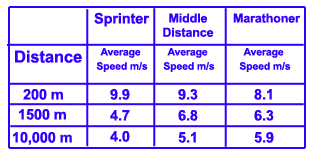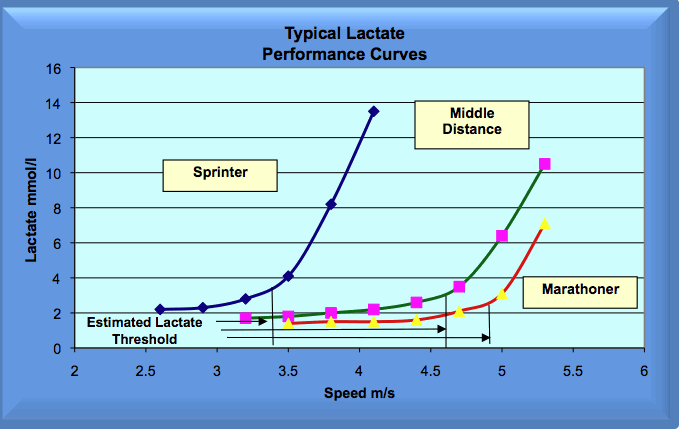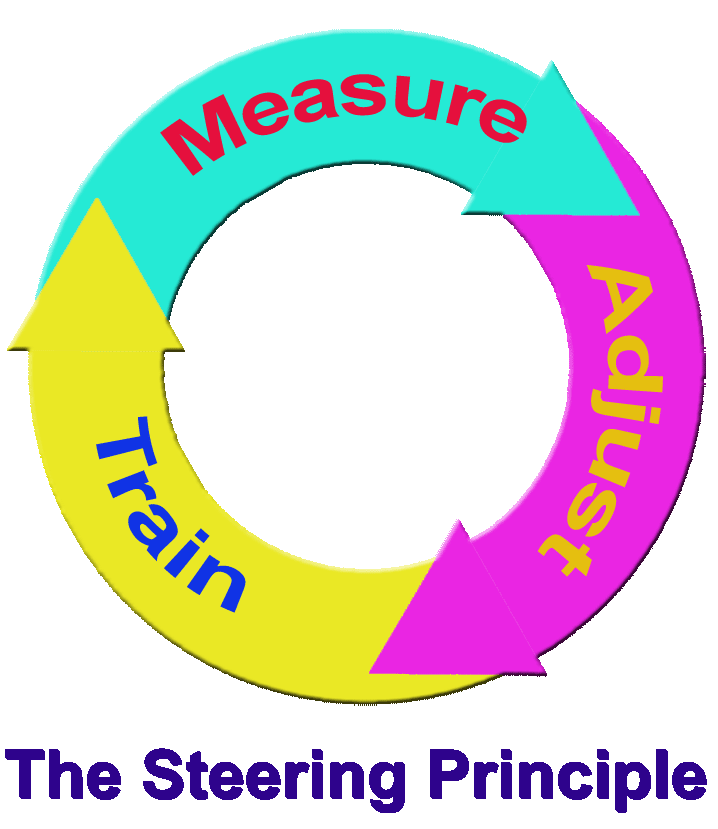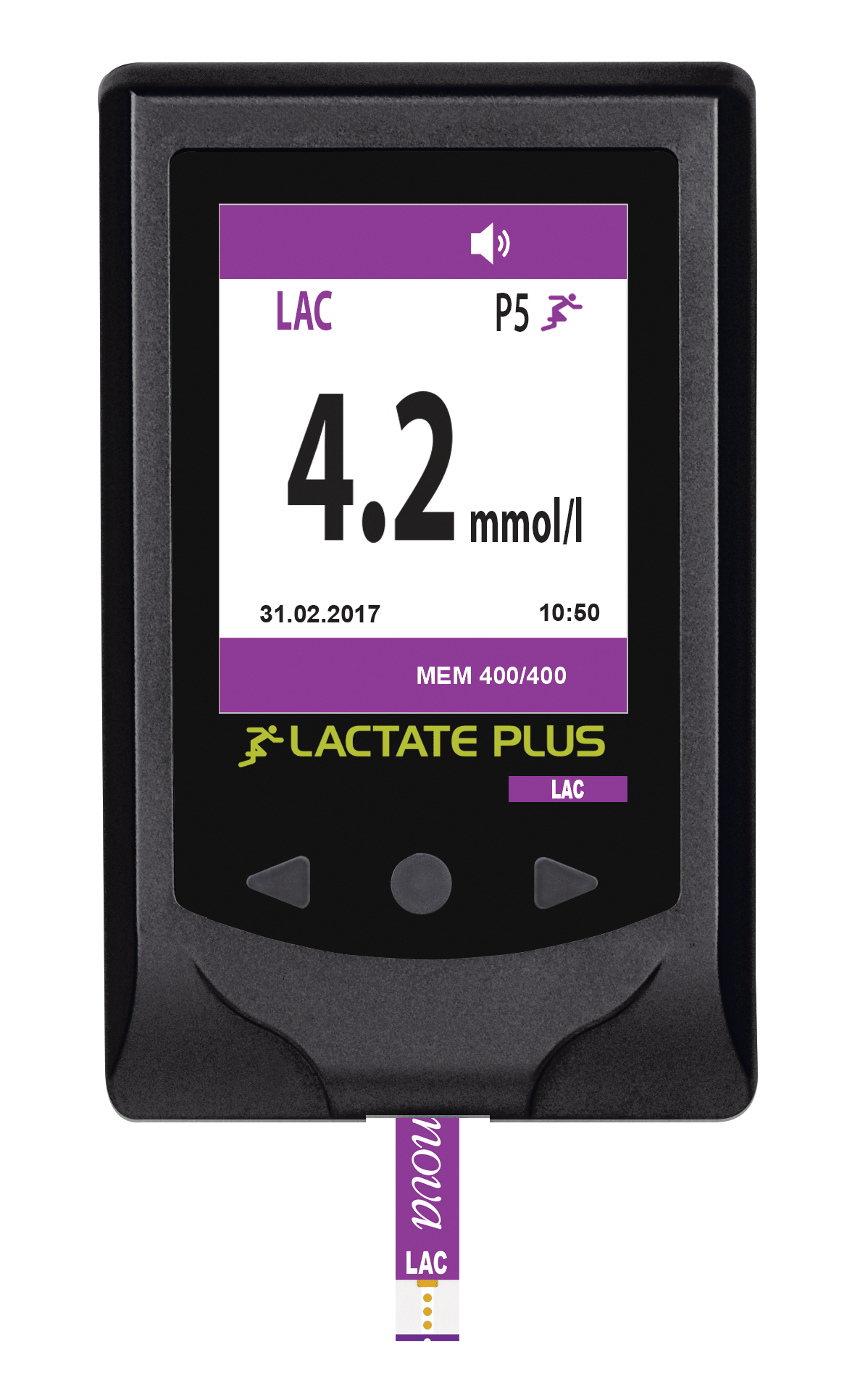Secrets of Lactate Course
Available online - Click for details
Lactate Threshold Discussion - Part 7
(If you entered this page first it is probably best to go to Part 1. The information is meant to be read in order)
Lactate Threshold Training
Training to improve the maximal lactate steady state is often called lactate threshold training.
However, this is not training at the lactate threshold. It is important to understand this distinction. The LT is not recommended as a useful training speed. Why?
Because training at this specific effort level is usually not good for the endurance athlete. First, because the athlete needs several adaptations and it is extremely unlikely that one training speed will produce them all. It is often a formula for over-training. These intensities are too stressful for most athletes, especially elite athletes. This may sound contradictory but the better the athlete the more dangerous is training near or above the threshold. If you do not understand that now, you should by the time you finish the rest of the sections on this site. There is an exception to this and we refer to this as suppresson training.
Training intensities can be based on the lactate threshold (for example often regenerative workouts for elite athletes are at a low percentage of the LT, such as 70% of the LT pace.) Training intensities for non elite athletes can be at a much higher percentage of the LT. This appears contradictory to most until they realize that these regenerative paces (70% of LT) for elite endurance athletes are at a much higher speed or power than 85-90% of the LT of a recreational athlete or 75-85% of a very good endurance athlete. The following chart shows the difference between various runners.

Training at high intensities is probably the most valuable training for improving endurance but should be very, very limited since an athlete can quickly over-train when exercising above the lactate threshold. Gifted endurance athletes do not feel much stress when training at or above the lactate threshold, but this can be deceiving. The stress they are putting on the aerobic system at these high intensities can break down their aerobic system too much and result in less aerobic capacity, not more.
So frequent training at the lactate threshold will most likely lower the lactate threshold and training at lower levels and significantly above it will often raise it.
The lactate threshold is best used to evaluate the results of a training program. It is the best marker to evaluate whether all those hours of training are paying off. But since we have shown that the lactate threshold is difficult to measure surrogate measures that are easy to measure are much more efficient. Further on we analyze these different measures as was also done in the tutorial chapters.
There you will find definitions of the different types of thresholds, their history, how they are used for training and how you can train them for better performance.
Suppression Training.
We are going to contradict ourselves in a way. Anaerobic capacity can be quickly changed through certain types of training. One way to lower anaerobic capacity for an endurance event is to conduct a training session or two at the threshold. However, because of the stress of these workouts they should be surrounded by regeneration workouts to reduce the severity of the workouts on aerobic capcity. But be careful. Too much suppression will reduce the anaerobic capacity too much and will actually end up slowing the athlete down for a distance race.
Balancing the Energy Systems
The ability of the muscles to reach a peak performance during an athletic event requires that the energy systems providing energy be "fine-tuned" or "balanced" properly so that the athlete can generate the highest amount of energy per unit of time during a race. Proper training is what accomplishes this fine-tuning or optimal balance of the aerobic and anaerobic systems and it is lactate testing that lets the coach know if the balance has been obtained or how each energy system must be trained in order to obtain the balance. To illustrate what is meant by balancing look at the following table:

Top middle distance runners definitely have VO2 max as high as marathoners as we have shown with our elite 1500m runner. The difference between a 1500 m runner and a marathoner is anaerobic capacity. The 1500 m runner and the marathoner's energy systems are balanced completely differently, so that they can excel at a specific distance. Knowing what this balance is for each athlete is the secret to success in sprints, middle distance and distance events. This balance produces very different lactate curves. Knowing your curve will tell you what you can expect to do in a race, especially the one you have been preparing for with all that training.

The Steering Principle gets you to your goal, an optimum performance
Coaching is a profession requiring both art and science. The building blocks for an optimal performance are many and must be constructed in a proper sequence and must recognize that each individual is different. Some of these building blocks are
- correct technique
- positive mental attitude and
- a proper diet.
However, the cornerstone for this building is precise physiological training. That is the main reason an athlete spends so much time in the water, on the bike, on the track or the road, in the weight room or wherever training is best conducted.
Ask yourself Do you know if all those miles/hours of training are paying out?
Revisit the Steering Process in Discussion #2 which is the process that leads to a optimum performance through constant testing

With proper protocols a portable lactate analyzer such as the Lactate Scout or Lactate Plus enables the coach to measure both the aerobic and anaerobic conditioning of each athlete. These analyzers provide a multi-dimensional profile of conditioning and over time shows adaptation in both energy systems. This will tell which forms of training are working (or not working). Training time becomes much more efficient as the athlete performs only workouts that work. The analyzer becomes a training compass that steers each athlete in the right direction.
It is much more relevant than heart rate monitoring which reflects a general overall body response to stress and doesn't necessarily reflect what is happening in the muscles or with the anaerobic system. It is much more versatile than VO2 testing which requires very expensive equipment and requires experts to administrate the test properly, and focuses solely on the aerobic system.
Lactate testing is also a learning and motivating experience for coaches and athletes as they become much more aware of the interactions of variables and the other nuances that affect workouts as well as performance. Since the emphasis will be on training energy systems and not the use of very broad training zones, coaches will understand what works best for each energy system and why, what may be counter-productive and when and in what sequence various types of training are appropriate.


